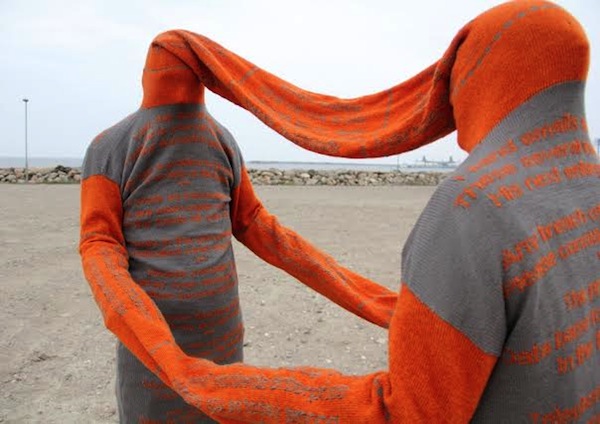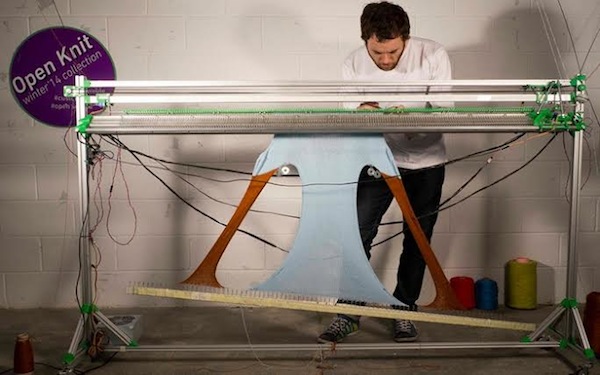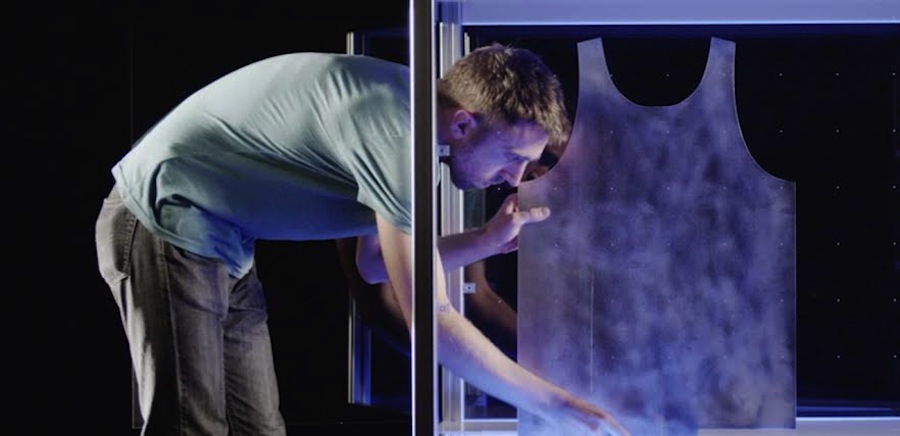*************************************************************************************************************************
Please share with Shareable. DONATE today to support our ad-free coverage of the real sharing economy
*************************************************************************************************************************
Fashion is a $1.2 trillion global industry, with more than $250 billion spent annually in the United States. Behind these big numbers is a big negative social and environment impact.
For example, sweatshops are found around the world. Workers in these sweatshops are poor, usually young women or children immigrants forced to work more than twenty hours a day. They are often routinely abused both physically and verbally. Sweatshops are concentrated in developing nations, but there are also sweatshops in the U.S. and other so called developed nations. [Note: To see how sweatshop labor is used in major manufacturing chains, see the World Map of Victoria Secret Sweatshops.]
Many luxury brands pay practically no regard to ethics and have yet to take even the first step toward reporting on the social and environmental impact of their operations. Bringing out a new line of clothing every year encourages fashion enthusiasts to buy new clothes they don't really need and encourages mindless consumerism. Consequently, the fashion industry has a great impact on the environment. Many synthetic materials are derived from petroleum, and their production cause gargantuan emissions of carbon dioxide.
And what about advertising? Fashion ads are everywhere. They are seductive and sometimes simply go too far, displaying abnormally thin models in a way that has been blamed for eating disorders.
Due to these destructive elements, the fashion industry could be one of the least sustainable in the world. But social innovations could change that. Through technological innovations, the open exchange of ideas via the Internet, and the open sourcing of design and manufacturing, people are producing quality clothes without relying on big fashion houses. Here are five companies leading the open source fashion revolution:
1. Burdastyle

Burda is a German publishing giant and historic fashion magazine published in 16 different languages in more than 89 countries. In the last few years, they launched Burdastyle, an interesting initiative promoting open source sewing on the company’s website.
Burdastyle aims to connect a whole community of users who exchange opinions and advice on how to design and sew clothes. It’s a free project designed to transform fashion into an open, free, sustainable and participatory universe based on creativity and individual needs.
Through the platform, users can access a large collection of patterns to download and print, an encyclopedia of sewing, and a close-knit community that exchanges tutorials, templates and tips on how to sew on your own. This is all offered under a Creative Commons license.
Participation in Burdastyle is very simple. Anyone above the age of 13 is free to register. Once registered, he or she can download free patterns. The website also features a specialized “Sew-Pedia” containing discussions on various ideas and models, complete with step by step explanations and photos showing the details.
2. Openwear

Openwear offers a different approach within the fashion industry's creative field by providing a platform where people from different backgrounds are able to access knowledge and best practices for collaborative and distributed work.
Openwear can be defined as a collaborative clothing platform—a place to network about fashion using online tools, discuss projects, and download and customize free collections. The platform was inspired by numerous requests from ecologically sustainable “non-sweatshops," and the growing relevance of collaboration and social engagement.
3. Knitic

In 2012, artist duo Vavara Guljajeva and Mar Canet dedicated themselves to the development of the Knitic project, an open source device that allows control of a loom for the production of knitwear.
Their first machine, Circula Knitic, is a printer that produces tubular fashioned knitwear. It won the grand prize in Instructables 3D Printing Contest.
The recipe is simple: you need a laser cutting machine, a 3D printer, a MakerBeam kit, and the versatile Arduino. The first two are available at Fab Labs or Makerspaces and the last two are easily purchased over the Internet. Alternatively, you can buy the whole kit or individual components directly from the site.
One interesting thing about the Knitic project is the use of EEG (electroencephalographic) technology to represents a novel way of personal, generative design and fabrication. For instance, using a non-invasive device, the emotional state of subjects has been monitored while listening to "The Goldberg Variations" by Bach. The results found in the electrical activity of the brain have been converted into a two-tone pattern.
This way, the unique, emotional response a subject had while listening to a song is captured and stored in a reproducible pattern of the device, which can be used to create a visual representation of real emotions. This approach brings together affective computing and digital crafts and offers new applications and creative thinking to both areas.
4. Openknit

Openknit is an open source 3D printer that can knit anything, from a simple hat to a textured sweater. It was developed by Spanish designer Gerard Rubio who, after having dedicated much time learning the technicalities of 3D printing, transformed what began as simple curiosity and experimentation into a new system of production.
The Openknit system is composed of three principal components: a sewing machine, the Knitic software that allows communication with the machine, and an online database where clothing is shared.
To simplify the user experience, there are instructions and materials provided for step-by-step construction of your Openknit printer, and the Knitic software allows you to customize clothes as you like.
5. Electroloom

Electroloom allows anyone to design and create ready-to-wear garments, from a personalized 3D geometry, without the need for seams. The brainchild of Marcus Foley, Aaron Rowley and Joseph White, a team of three engineers from San Francisco, Electroloom offers the comfort of being able to do everything, from design to finished product, from home.
One of the objectives of Electroloom is to reduce the amount of energy necessary for the production of a garment. Unlike traditional methods, Electroloom does not cut or sew, but generates the fabric from zero, through the technique of electrospinning, a method that converts a special liquid nanofiber solution, sprayed and deposited on the plate model. The plate is driven by an electromagnetic field inside the printer by a process very similar to the techniques used in laboratories to produce organic tissue.
Currently, Electroloom works with a mixture of polyester and cotton and has been tested on silk. Users only need to possess some basic CAD (Computer-Aided Design) skills to design their own models, and Electroloom does the rest. Once removed from the mold, the flexible material can be draped, pleated and reworked in a way similar to traditional fabrics.
These are some examples of technologies and initiatives with revolutionary potential. These innovations, combined with the ability to obtain copyright-free designs of all kinds, will allow the creation of custom, homemade clothes, a trend which is already happening in the shoe industry.
It’s so easy to imagine how this might impact a market tied to values that have long abandoned ethics in favor of profit that can prosper only due of the omnipresent advertising bombardment.
##
Top photo: Electroloom. Thanks to www.sharingame.org for this story about sharing economy.









